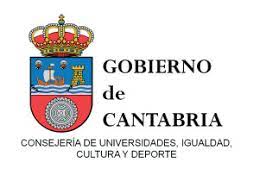The exemplary Novels: A bridge between two cultures
DOI:
https://doi.org/10.55422/bbmp.932Keywords:
Cervantes, Novelas ejemplares, Courtly aesthetic, Popular aesthetic, Trial, Journey, Grotesque, ComedyAbstract
The aesthetics of the Exemplary Novels is articulated on an artistic experiment consisting of building bridges between courtly culture and popular culture. Court society cultivates a public image in accordance with the responsibilities of a political caste with governmental tasks. This public image demands the construction of an individual identity. The popular bloc, on the other hand, does not need an individual identity. This social duality (courtly-popular) has its correlation with a cultural duality based on an array of aesthetic categories oriented towards the identity component (proof, didacticism) and towards tradition (the journey or the grotesque). This article proposes a hypothesis for the study of the Exemplary Novels based on the premise that the study of the pre-modern past must be founded on the duality of cultures. This dualism had its stellar moment between the sixteenth and seventeenth centuries when court society reached its splendor. That is why Cervantes attempts an approximation of these two aesthetics, and perhaps therein lies the meaning of the Exemplary Novels.
Downloads
Publication Facts
Reviewer profiles N/A
Author statements
Indexed in
- Academic society
- Sociedad Menéndez Pelayo
- Publisher
- Sociedad Menéndez Pelayo
Global Statistics ℹ️
|
350
Views
|
303
Downloads
|
|
653
Total
|
|
References
AVALLE-ARCE, Juan Bautista, ed. (1982). Novelas ejemplares. Madrid. Castalia. 3 vols.
———————————— (1957). «Una tradición literaria: el cuento de los dos amigos». Nueva Revista de Filología Hispánica. 11. 1. 1-35. DOI: https://doi.org/10.24201/nrfh.v11i1.1354
BAJTÍN, Mijail (1989). Teoría y estética de la novela. Trad. de Helena S. Kriukova y Vicente Cazcarra. Madrid. Taurus.
BAQUERO ESCUDERO, Ana (2006). «El motivo del viejo y la niña en Galdós y otros grandes novelistas del siglo XIX». Moenia. 22. 17-36.
BELTRÁN, Luis (2019). «La querella del realismo». Teoría-(s) de la novela moderna. España-Francia: 1868-1966. Revisión historiográfica, Bénédicte Vauthier (ed.). Oviedo. Genueve Ediciones. 67-83.
GARCÍA LORCA, Francisco (1965). «El licenciado Vidriera y sus fuentes». Revista Hispánica Moderna. XXXI. 159-168.
CERVANTES, Miguel de (2001). Novelas ejemplares. Ed. de Jorge García López. Barcelona. Crítica.
__________________ (2015). Don Quijote de la Mancha. Dir. Francisco Rico. Madrid. Real Academia Española. 2 vols.
__________________ (1914). Obras Completas de Miguel de Cervantes Saavedra. Persiles y Sigismunda. Madrid. Imprenta de Bernardo Rodríguez.
CASALDUERO, Joaquín (1962). Sentido y forma de las «Novelas Ejemplares». Madrid. Gredos.
CASTRO, Américo (2002). El pensamiento de Cervantes y otros estudios cervantinos. Ed. de José Miranda y prólogo de Julio Rodríguez Puértolas. Madrid. Trotta.
CLAMURRO, William (1997). Beneath the Fiction: The Contrary Worlds of Cervantes´s «Exemplary Novels». New York. Peter Lang.
CHEVALLIER, Maxime (1999). Cuento tradicional, cultura, Literatura. Salamanca. Universidad de Salamanca.
DEYERMOND, Allan D. (1975). «The Lost Genre of Medieval Spanish Literature» Hispanic Review. Summer 43. 3. 231-259. DOI: https://doi.org/10.2307/472251
EL SAFFAR, Ruth (1974). Novel to Romance: A Study of Cervantes´s «Novelas ejemplares». Baltimore. Johns Hopkins University Press.
FORCIONE, Alban K. (1972). Cervantes’ Christian Romance. Princeton. Princeton University Press. 150-151.
GARCÍA LÓPEZ, Jorge. ed. (2001). Novelas ejemplares. Barcelona. Crítica.
GÓMEZ MORENO, Ángel (2014). »Turpe senex miles, turpe senilis amor (Amores 1, 9, 4), Ovidio Cranach y Cervantes». Anales Cervantinos. XLVI. 203-224. DOI: https://doi.org/10.3989/anacervantinos.2014.012
GONZÁLEZ DE AMEZÚA, Agustín (1956-57). Cervantes: creador de la novela corta española. Madrid. Consejo Superior de Investigaciones Científicas. 2 vols.
HEMPEL, Wido (1986). «El viejo y el amor. Apuntes sobre un motivo en la literatura española de Cervantes a García Lorca». A. David KOSSOFF, José AMOR Y VÁZQUEZ, Ruth H. KOSSOFF y Geoffrey W. RIBBANS, eds., Actas del VIII Congreso de la Asociación Internacional de Hispanistas, Madrid. Ediciones Istmo. 693-702;
JOLLY, Monique (1983). «Para una reinterpretación de La ilustre fregona: ensayo de tipología cervantina». Aureum Saeculum Hispanum: Beitr äge zu Texten des Siglo de Oro. Festschrift für Hans Flasche zum 70 Geburtstag. Karl-Hermann Körner, y Dietrich Briesemeister, eds. Wiesbaden. Steiner. 103-116.
LOZANO-RENIEBLAS, Isabel (2019). «Viéndose falto de dineros se acogió a las Indias: Cervantes indiano». Francisco Ramírez Santacruz, ed. Cervantes transatlántico / Transatlantic Cervantes. Peter Lang. 65-78.
LUCIANO DE SAMÓSATA (1992). Al que dijo: «Eres un Prometeo en tus discursos». Obras IV. Trad. y notas de José Luis Navarro González. Madrid. Gredos.
ORTEGA Y GASSET, José (1984). Meditaciones del «Quijote». Ed. de Julián Marías. Madrid. Cátedra.
PLATÓN (1985). Apología de Sócrates. Platón, Diálogos I. Trad. y ed. de J. Calonge Ruiz, E. Lledó Íñigo y C. García Gual. Madrid. Gredos.
REDONDO, Agustín (1981). «La folie du cervatin licencié de verre (traditions, contexte historique et subversión)». Visages de la folie (1500-1560). A. Redondo y A Rochon eds. París. Publications de la Sorbone. 33.
REEVE, Clara (1785). The Progress of Romances through Times, Countries and Manners. London. Printed by the Author.
RILEY, Edward C. (1987). «Cervantes: una cuestión de género». El Quijote de Cervantes. G. Haley, ed. Madrid. Taurus. 37-51.
——————(2001). «Cervantes y los cínicos. El licenciado Vidriera y El coloquio de los perros». La rara invención. Barcelona. Crítica. 219-238.
SALAZAR RINCÓN, Javier (1995-1997). «De ventas y venteros: tradición literaria, ideología y mímesis en la obra de Cervantes». Anales Cervantinos. XXXIII. 85-116. DOI: https://doi.org/10.3989/anacervantinos.1997.305
SANTA CRUZ, Alonso (2005). Sobre la melancolía. Diagnóstico y curación de los afectos melancólicos (ca. 1569). Trad. de Raúl Lavalle. Introducción, revisión y notas histórico-médicas de Juan Antonio Paniagua. Pamplona. Ediciones Universidad de Navarra.
SCHEVILL, Rudoph y BONILLA, Adolfo, eds. (1922-25). Novelas ejemplares. Obras completas de Miguel de Cervantes Saavedra. Madrid. Gráficas Reunidas.
SIMMEL, Georg (2002). Sobre la aventura: Ensayos filosóficos. Barcelona: Península.
SOBEJANO, Gonzalo (1978). «Sobre tipología y ordenación de las Novelas ejemplares». Hispanic Review. 46. 65-75. DOI: https://doi.org/10.2307/472272
VEGA, María José (1993). La teoría de la novella en el siglo XVI: La poética aristotélica ante el «Decamerón». Salamanca. Johannes Cromberger.
YUDIN, Florence (1968). «The novela corta as comedia: Lope´s Las fortunas de Diana». Bulletin of Hispanic Studies. 45. 181-188. DOI: https://doi.org/10.1080/1475382682000345181
Downloads
Published
How to Cite
Issue
Section
License
Copyright (c) 2023 Isabel Lozano-Renieblas

This work is licensed under a Creative Commons Attribution-NonCommercial 4.0 International License.







